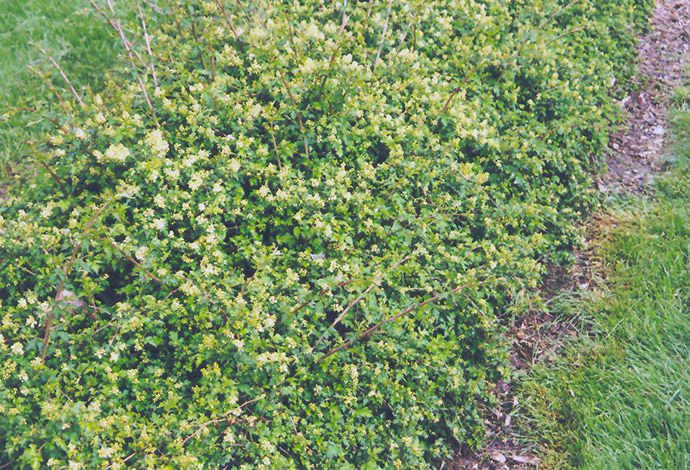The Plant Finder
Have a specific vision in mind for your outdoor space?
Search our database and find the perfect plants to meet your gardening needs.
Height: 5 feet
Spread: 5 feet
Sunlight:
![]()
![]()
Hardiness Zone: 4a
Description:
A dense, low growing shrub with thin branches arching to the ground and small attractive foliage, forms an upright mound; tends to sucker, makes an ideal groundcover shrub; needs organic acidic soil, not for alkaline soils, protect from drying winds
Ornamental Features
Cutleaf Stephanandra has attractive emerald green deciduous foliage which emerges burgundy in spring on a plant with a spreading habit of growth. The small deeply cut lobed leaves are highly ornamental and turn an outstanding orange in the fall.
Landscape Attributes
Cutleaf Stephanandra is a spreading deciduous shrub with a ground-hugging habit of growth. Its relatively fine texture sets it apart from other landscape plants with less refined foliage.
This shrub will require occasional maintenance and upkeep, and is best pruned in late winter once the threat of extreme cold has passed. It has no significant negative characteristics.
Cutleaf Stephanandra is recommended for the following landscape applications;
- Groundcover
Planting & Growing
Cutleaf Stephanandra will grow to be about 5 feet tall at maturity, with a spread of 5 feet. It tends to fill out right to the ground and therefore doesn't necessarily require facer plants in front, and is suitable for planting under power lines. It grows at a fast rate, and under ideal conditions can be expected to live for approximately 20 years.
This shrub does best in full sun to partial shade. It prefers to grow in average to moist conditions, and shouldn't be allowed to dry out. It is not particular as to soil type, but has a definite preference for acidic soils, and is subject to chlorosis (yellowing) of the foliage in alkaline soils. It is somewhat tolerant of urban pollution, and will benefit from being planted in a relatively sheltered location. Consider applying a thick mulch around the root zone in winter to protect it in exposed locations or colder microclimates. This species is native to parts of North America.

